Caribou-Poker Creeks Research Watershed NEON (BONA) Soil Descriptions
Distributed Soils Reports
Pedon Descriptions
Pit‐level observations and field measurements reported using the standard NRCS format. They contain volume estimates for coarse fragments > 20 mm where applicable.
Site Level Plot Summary
A narrative summary that places the sampled soil pedons in the broader context of soils and geomorphology for the entire NEON site.
Megapit Images
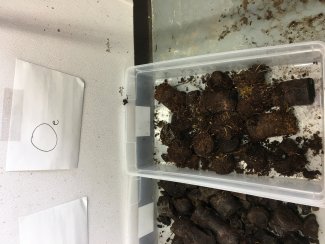
D19 BONA megapit soil profile 0-8 cm
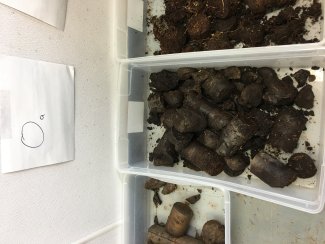
D19 BONA megapit soil profile 8-17 cm
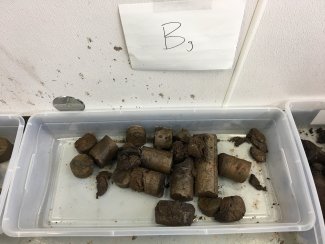
D19 BONA megapit soil profile 17-33 cm
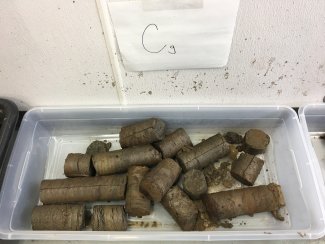
D19 BONA megapit soil profile 33-51 cm
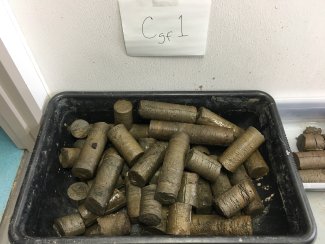
D19 BONA megapit soil profile 51-83 cm
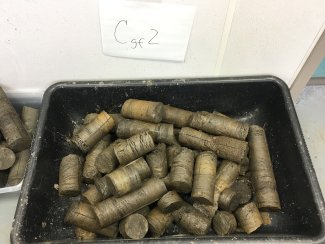
D19 BONA megapit soil profile 83-126 cm
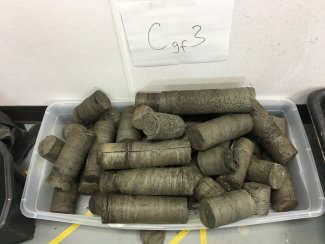
D19 BONA megapit soil profile 126-188 cm
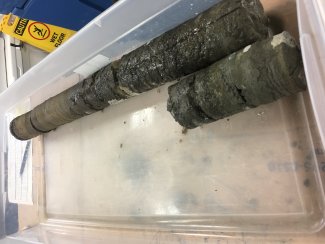
D19 BONA megapit soil profile
Megapit Pedon Description
| Print Date | Feb 21 2018 |
|---|---|
| Description Date | Mar 22 2017 |
| Site ID | S2017AK090001_MP |
| Pedon ID | S2017AK090001_MP |
| Lab Source ID | KSSL |
| Lab Pedon # | 17N0581 |
| Soil Name as Described/Sampled | Saulich |
| Classification | Coarse-silty, mixed, superactive, subgelic Typic Histoturbels |
| Pedon Purpose | research site |
| Taxon Kind | series |
| Geomorphic Setting | None Assigned |
| Particle Size Control Section | 25 to 100 cm. |
| Description origin | NASIS |
| MLRA | 231 -- Interior Alaska Highlands |
| Soil Survey Area | AK642 -- North Star Area, Alaska |
| Std Latitude | 65.1533333 |
| Std Longitude | -147.0519400 |
| Parent Material | organic material over silty eolian deposits and/or silty colluvium |
| Description database | KSSL |
| Diagnostic Features | histic epipedon 0 to 22 cm. aquic conditions 10 to 56 cm. cryoturbation 22 to 38 cm. permafrost 56 to 198 cm. |
| Drainage Class | poorly |
| Horizon Details |
Oe--0 to 10 centimeters (0.0 to 3.9 inches); black (7.5YR 2.5/1) rubbed peat; 0 percent unspecified fragments. Lab sample # 17N02991 Oa--10 to 22 centimeters (3.9 to 8.7 inches); very dark brown (10YR 2/2) rubbed mucky peat; 0 percent unspecified fragments. Lab sample # 17N02992 Bg/Oajj--22 to 38 centimeters (8.7 to 15.0 inches); dark grayish brown (10YR 4/2) broken face stratified mucky peat to silt loam; 65 percent medium prominent irregular 5YR 3/4), moist, masses of oxidized iron throughout; 0 percent unspecified fragments. Lab sample # 17N02993 Cg--38 to 56 centimeters (15.0 to 22.0 inches); dark gray (5Y 4/1) broken face silt; 10 percent medium prominent irregular 7.5YR 4/6), moist, masses of oxidized iron throughout; 0 percent unspecified fragments. Lab sample # 17N02994. Horizon contains up to 50% visible ice in lenses Cgf1--56 to 88 centimeters (22.0 to 34.6 inches); dark gray (2.5Y 4/1) broken face silt loam; 18 percent medium prominent irregular 7.5YR 4/6), moist, masses of oxidized iron throughout; 0 percent unspecified fragments. Lab sample # 17N02995 Cgf2--88 to 131 centimeters (34.6 to 51.6 inches); dark gray (2.5Y 4/1) broken face silt loam; 20 percent medium prominent irregular 10YR 4/4), moist, masses of oxidized iron throughout; 0 percent unspecified fragments. Lab sample # 17N02996 Cgf3--131 to 193 centimeters (51.6 to 76.0 inches); dark grayish brown (2.5Y 4/2) broken face silt loam; 5 percent medium prominent irregular 10YR 5/8), moist, masses of oxidized iron throughout; 0 percent unspecified fragments. Lab sample # 17N02997 |
Credits: This megapit soil pedon description was generously created by USDA Natural Resource Conservation Service staff, with particular thanks to Larry West, Jon Hempel, and numerous field staff.